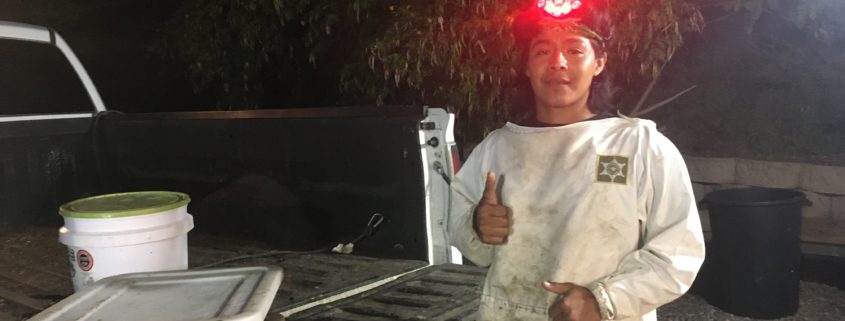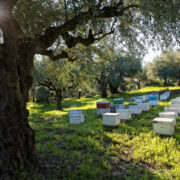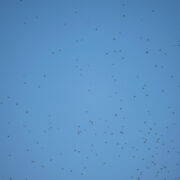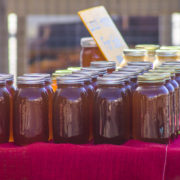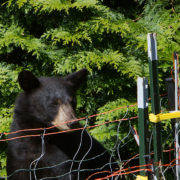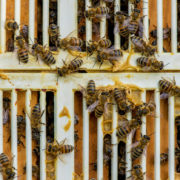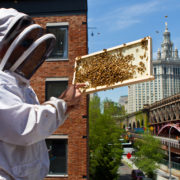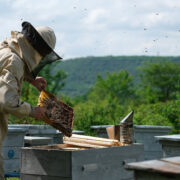Nocturnal Beekeeping
Most beekeeping activities are best handled during the day. Hive inspections, queen replacement, honey harvesting, etc., all require good lighting and a relaxed daytime environment to be enjoyable and effective. After all, working with the bees on a pleasant, relaxing day is what beekeeping is all about.
On the other hand, certain activities, such as moving beehives, are best approached at night when the bees are dormant inside their colonies. Commercial beekeepers who frequently need to move their bees are well acquainted with putting in long nights of loading and unloading bees in the dark of the night.
Recently, however, here at Wildflower Meadows, we are experimenting with adding another evening activity to our beekeeping repertoire: syrup feeding. The reason for this late-day approach to feeding is to slow down the likelihood of robbing behavior in the apiary. When robbing pressure is high, feeding a large apiary early in the day can turn into the most unpleasant of experiences. As the bees in the apiary become aware of the presence of fresh syrup, they can quickly become whipped up into a feeding frenzy. Before long, the strong colonies begin to test the defenses of the weaker colonies, sometimes breaking through and inciting further robbing. And once robbing starts, there is no stopping it. It will continue all day long, with the results being absolutely damaging. Weak colonies are overrun. Diseases can spread, and colonies will be lost.
However, we have a new strategy, which we learned from one of our larger commercial queen customers. We begin our feeding at sunset and end at nightfall. When the bees can’t fly, they can’t rob. By feeding in the evening, the colonies have little ability to fly for very long and begin robbing. Then, after the feeding ends at nightfall, each colony has the benefit of the entire night to work through their syrup and ready their guard bees without actually having to defend against robber bees. For us, and especially the bees, this new feeding strategy is really making a difference. When the sun gets low, our beekeepers turn on their red headlamps (bees are not able to see red light and won’t fly into it) and get to work – nocturnal beekeeping in action!

